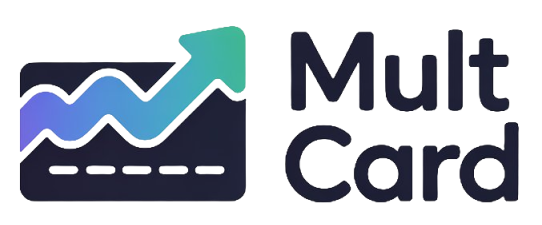Navigating the world of personal finance can feel complex, but the digital age has brought unprecedented convenience to borrowing. Getting a loan no longer requires multiple trips to a bank, long waits, and stacks of physical paperwork. Today, the entire process can often be completed from the comfort of your home, with funds potentially landing in your account within a day or two.
As we move into 2025, the online lending landscape is more sophisticated and competitive than ever. This guide is designed to demystify the process, equipping you with the knowledge to find, apply for, and secure the right online loan for your needs safely and confidently. We’ll cover everything from the different types of loans available to the red flags that signal a potential scam.
What Exactly Are Online Loans and How Do They Work?
An online loan is simply a loan that you apply for and manage through a digital platform, such as a lender’s website or mobile app, rather than in person at a physical branch. These lenders can range from online-only financial technology (fintech) companies to the digital arms of traditional banks. The core principle remains the same: you borrow a sum of money and agree to pay it back over a set period, with interest.
The process is built for speed and efficiency. Typically, it involves filling out an online application, digitally verifying your identity and income, and receiving an instant or near-instant decision. If approved, you’ll electronically sign a loan agreement, and the funds are transferred directly to your bank account, sometimes in as little as 24 hours.
Key Differences from Traditional Bank Loans
While the goal is the same, the experience of getting an online loan versus a traditional one differs significantly. Understanding these distinctions is key to deciding which path is right for you.
- Speed and Convenience: This is the biggest advantage. Online applications can be completed anytime, anywhere, with much faster approval and funding times compared to the days or weeks it can take with a traditional bank.
- Application Process: Online lenders often use advanced algorithms to assess risk, which can streamline the application and sometimes lead to approvals for applicants who might be overlooked by traditional metrics alone.
- Interest Rates and Fees: Rates can be more competitive due to lower overhead costs for online lenders. However, they can also be higher, especially for borrowers with poor credit, so comparison is crucial.
- Personal Interaction: Online lending lacks the face-to-face guidance of a loan officer. All support is typically handled via chat, email, or phone.
Types of Online Loans Available in 2025
The term “online loan” is a broad category. The right type for you depends on how much you need, what you need it for, and your credit profile. Here are the most common options you’ll encounter:
- Personal Loans: These are unsecured installment loans, meaning you don’t need to provide collateral. You receive a lump sum and pay it back in fixed monthly payments over a term of one to seven years. They are highly versatile and can be used for debt consolidation, home improvements, or major expenses.
- Payday Loans: These are short-term, high-cost loans designed to be repaid on your next payday. While easy to obtain, they should be approached with extreme caution due to incredibly high interest rates and fees that can trap borrowers in a cycle of debt.
- Installment Loans: This is a broad category that includes personal loans. The defining feature is a fixed repayment schedule over a set term. They provide predictability in your budget as the payment amount never changes.
- Lines of Credit: Unlike a loan where you get a lump sum, a line of credit gives you access to a set amount of funds you can draw from as needed. You only pay interest on the amount you use. It’s a flexible option for ongoing or unexpected expenses.
Step-by-Step: Your Action Plan for Securing an Online Loan
Following a structured approach will help you navigate the process smoothly and increase your chances of getting a favorable offer. Think of it as a mission with clear, manageable steps.
Step 1: Assess Your Financial Health (The Pre-Application Checklist)
Before you even start looking at lenders, you need to know where you stand. This self-assessment is critical. Take stock of your credit score, your monthly income, and your existing debts. Your debt-to-income (DTI) ratio—your total monthly debt payments divided by your gross monthly income—is a key metric lenders use to gauge your ability to handle new debt.
Step 2: Determine How Much You Need to Borrow
It can be tempting to borrow more than you need, but this will only increase your total interest costs. Calculate the exact amount required for your specific purpose and stick to it. Create a simple budget to ensure you can comfortably afford the monthly payments for the loan amount you’re seeking.
Step 3: Research and Compare Online Lenders
This is the most important step. Don’t jump at the first offer you see. Use comparison websites and read reviews to vet different lenders. Focus on comparing the key features that will impact your total cost of borrowing.
Here is a table to help you organize your research:
| Lender | APR Range | Loan Amounts | Loan Terms | Key Feature |
|---|---|---|---|---|
| Lender A | e.g., 7.99% – 24.99% | e.g., $2,000 – $40,000 | e.g., 24 – 60 months | e.g., No origination fee |
| Lender B | e.g., 6.50% – 21.00% | e.g., $5,000 – $50,000 | e.g., 36 – 84 months | e.g., Fast funding |
| Lender C | e.g., 9.95% – 35.99% | e.g., $1,000 – $35,000 | e.g., 12 – 48 months | e.g., Good for fair credit |
Step 4: Gather Your Documentation
Being prepared will make the application process much faster. Most online lenders will require digital copies of the following:
- Government-issued photo ID (Driver’s License, Passport)
- Proof of income (pay stubs, tax returns, bank statements)
- Proof of address (utility bill, lease agreement)
- Your Social Security number
- Bank account and routing numbers for funding
Step 5: Complete and Submit the Application
Many lenders offer a pre-qualification process that shows you potential rates and terms with only a soft credit inquiry, which won’t affect your credit score. Once you’ve chosen a lender, proceed with the full application. Double-check all information for accuracy before submitting to avoid delays.
Step 6: Review the Loan Offer Carefully
If approved, you’ll receive a formal loan agreement. Read this document thoroughly before signing. Pay close attention to the Annual Percentage Rate (APR), which includes the interest rate plus any fees. Understand the monthly payment, the total loan cost, and any penalties for late payments or prepayment.
Navigating the Risks: How to Spot and Avoid Loan Scams
The convenience of online lending also makes it a target for scammers. Protecting yourself is paramount. Be wary of any lender that exhibits these red flags, which are often detailed by consumer protection agencies like the Federal Trade Commission.
-
- “Guaranteed” Approval: Legitimate lenders must assess your credit and ability to repay. A guarantee of approval, regardless of your financial situation, is a major red flag.
- Upfront Fees: A lender should never ask you to pay a fee before you receive your loan funds. Fees, like origination fees, should be disclosed upfront and are typically deducted from the loan proceeds.
–High-Pressure Tactics: Scammers often create a false sense of urgency, pressuring you to “act now” before an offer expires. Take your time to review everything.
- Unsecure Website: Always check that the lender’s website URL begins with “https://” and has a padlock symbol in the address bar. This indicates the connection is secure.
Frequently Asked Questions About Online Loans
Here are quick answers to some of the most common questions people have about the process.
Can I get an online loan with bad credit?
Yes, it is possible. Many online lenders specialize in lending to individuals with fair or poor credit (typically a score below 630). However, you should expect to pay a higher interest rate and may face stricter terms. Improving your credit score before applying is always the best strategy for securing a lower rate. You can learn more about what constitutes a good credit score from major credit bureaus.
How quickly can I get the money from an online loan?
This is a major selling point. Many online lenders can approve and fund a loan within one to two business days. Some can even provide same-day funding if the application is completed early on a weekday and there are no issues with verification.
Do online loans affect my credit score?
Yes, they do, in the same way any loan does. The initial application may result in a hard credit inquiry, which can temporarily dip your score by a few points. Making on-time payments will help build a positive credit history and improve your score over time. Conversely, late or missed payments will damage your credit score significantly.
Conclusion: Making the Right Choice for Your Financial Future
Online loans in 2025 offer a powerful and convenient tool for managing your finances, but they come with the responsibility of due diligence and careful planning. By assessing your needs, understanding your financial standing, and thoroughly researching lenders, you can harness the benefits of digital lending while avoiding potential pitfalls. The key is to borrow responsibly and choose a loan with terms you can comfortably manage.
Always remember that a loan is a serious financial commitment. For an unbiased overview of what’s involved, you can always consult reliable resources that provide a complete guide to getting an online loan from a consumer protection standpoint. Empowered with the right information, you are well-prepared to make a decision that supports your long-term financial well-being.




